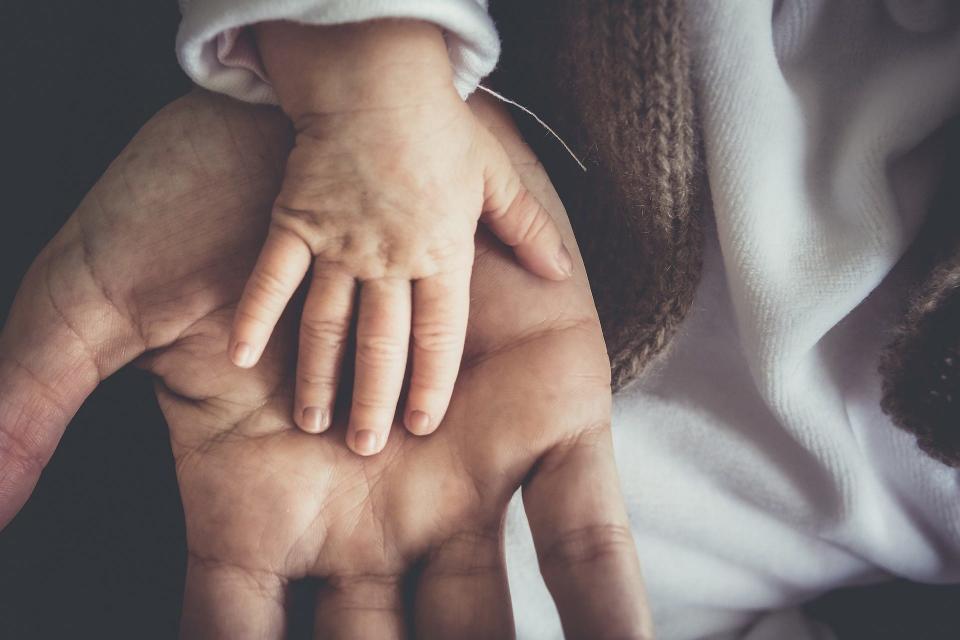Zeeland genealogist solves decades-old mystery of abducted toddler
ZEELAND — Even as a child, Luann DeVries cared about those who’d come before.
“I would love to go visit all the old great aunts and uncles and listen to their stories,” DeVries said.
Some of those tales involved a family named Moroney.
“Alice Moroney was my dad’s grandmother,” DeVries said.
But it wasn’t until the '80s that DeVries, married and raising a family in Zeeland, learned about a decades-old Moroney family mystery.

She’d been corresponding through letters with two great aunts in Chicago.
“They were asking me if I had found anything about this baby, Mary Agnes Moroney, who was kidnapped in Chicago,” DeVries said. “They asked me if I could find out if we were all related.”
DeVries had never heard of the 1930 abduction, which headlined newspapers across the country.
Like many families on the front end of the Great Depression, the Moroneys were struggling. Desperate to put food on the table of their southside Chicago home, Mary Agnes’ parents — Michael and Catherine — reached out to social services for help.
“This lady … the very next day, showed up on the doorstep claiming she was a social worker, and she brought money and gifts for the children and was very nice,” DeVries said.
The “social worker” offered to take Mary Agnes shopping for clothes, but Catherine initially declined. When the woman returned the next day with more food and gifts, she relented.
“The mother thought, ‘I guess she’s on the up and up since she came twice, and she brought food. OK, for just a little while, and come back in the afternoon.'"
But she didn't come back.
The next day, in a letter to the Moroney family, the woman explained she'd taken Mary Agnes to California by train and would return her in two months. Two weeks later, a second letter arrived.
“The handwriting was the same, but it said it was from (the social worker’s) boss, (who said) she took the baby,” DeVries said. “She kidnapped her, and she’s not going to bring her back.”
Despite a massive manhunt and nationwide headlines, Mary Agnes was never found.
Five decades later, Luann DeVries’ great aunts set her on a mission to solve the mystery. But it wasn’t until 2012 that sites like ancestry.com had amassed enough consumer DNA samples to make a search feasible.
“I (searched) every Moroney that was on there … making (family) trees, and nothing connected to the kidnapping case,” she said.
Then, DeVries made contact with a niece of Mary Agnes’ in Chicago.
“I asked her if she would take this ancestry DNA test, and she did, and she gave me access to her account,” DeVries said.
That allowed the Zeeland genetic genealogist to search for similar DNA. In addition to ancestry.com, DeVries relied on a website called DNA Painter. DeVries would enter match levels and the site would calculate and produce the most likely familial connection — i.e. sibling, parent, grandparent.
Last summer, after years of fruitless tree tracing, DeVries hit paydirt.
“In the middle of August, I was so excited.”
She'd found a potential grandchild of Mary Agnes.
“I messaged her, saying I was trying to put my family together and helping out somebody else, and she was a high match,” DeVries said. “I didn’t want to say, ‘Hey, your grandma (isn't) who you thought she was. She was kidnapped in 1930.’ I don’t want to come out and say that. She’d just hang up on me.”
That connection led her to Mary Agnes’ daughter, living in Florida.
“I mailed her a DNA kit, and she tested and it came back that her number was high enough that she would be a daughter of Mary Agnes,” DeVries said. “It kind of scared her, but she wanted to know more.”
Through city directories and census records, DeVries learned the child born Mary Agnes Moroney lived just 11 miles from her biological parents for several years after her kidnapping.
“Then, the person who calls herself her mother remarried and moved to the east coast,” DeVries said.
Later, they moved to Florida.
“(Mary Agnes) grew up, got married, had children, grandchildren, great-grandchildren. She ended up living a happy, fulfilled life, which makes her Chicago family, her biological relatives very happy to know."
Mary Agnes’ parents had never given up.
“They never stopped looking until they died,” DeVries said. “And they made each of their kids promise to keep looking. ‘Keep trying to find your sister,’ and all those siblings of hers made their kids all promise to keep looking. ‘Never give up until you find her.'”
After 93 years, Michael and Catherine can finally rest.
DeVries counseled — and consoled — the Florida daughter, who never knew her mom’s real name. She certainly didn't know what role her grandmother played, or why.
“They said, ‘It can’t be. I love my grandma. Or, I love my mother.’ And I said, ‘She’s still the same mother, grandmother that raised you, and she’s no different. It’s just that she came from somewhere other than (where) you thought she did."
The woman born Mary Agnes Moroney died in Florida in 2003.
On Feb. 3, the cold case unit of the Chicago Police Department pronounced the Moroney kidnapping investigation officially closed. There was no one to question, no one to prosecute.
CeCe Moore, a renowned genetic genealogist, reviewed Luann DeVries’ work at the request of the Chicago Police Department. Moore declared DeVries’ findings accurate.
Mary Agnes’ biological family doesn't wish to speak publicly yet. Neither does the family that had no idea the loved one they lost in 2003 was actually Mary Agnes Moroney, born in Chicago on May 8, 1928.
This article originally appeared on The Holland Sentinel: Zeeland genealogist solves decades-old mystery of abducted toddler

